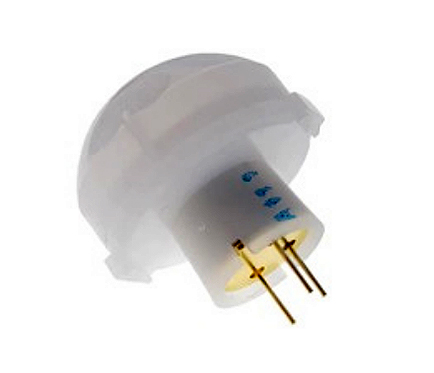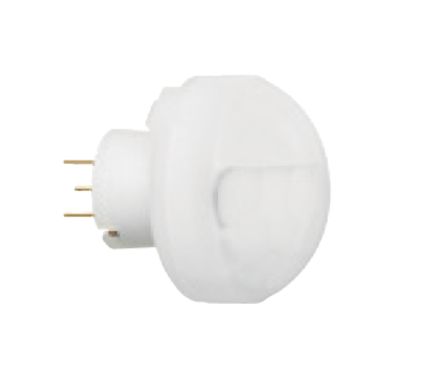Passive Infrared (PIR) sensors serve as efficient occupancy sensors, detecting infrared signals emitted by objects, including human bodies. They offer a cost-effective alternative to Microwave Sensors, utilizing pyro-electric sensors to generate energy when exposed to heat. While they boast several advantages, it’s crucial to understand their limitations as well.
Advantages of PIR Sensors:
- Reliable Motion Detection: PIR sensors excel in reliably detecting motion indoors, regardless of lighting conditions.
- Energy Efficiency: With low power consumption ranging from 0.8W to 1.0W, PIR sensors offer an energy-efficient solution.
- Cost-Effectiveness: PIR sensors are generally more affordable than Microwave Sensors, making them a preferred choice for various applications.
- Suitable for Compact Spaces: Their compact design makes PIR sensors ideal for smaller premises, contributing to their versatility in electrical applications.
Best Offer Available
EKMC1603111 Panasonic PIR Motion Sensor
Request For Price
EKMC1604111 Panasonic PIR Motion Sensors
Request For Price
Disadvantages of PIR Sensors:
- Limited Sensitivity and Coverage: Compared to Microwave Sensors, PIR sensors have lower sensitivity and coverage.
- Temperature Constraints: PIR sensors are ineffective at temperatures exceeding 35 degrees Celsius, limiting their usability in certain environments.
- Line of Sight Dependency: Effective operation relies on a clear line of sight, posing challenges in corner regions.
- Insensitivity to Slow Motion: PIR sensors may not detect very slow-moving objects effectively.
- Temperature Sensitivity: Warm room temperatures can reduce sensitivity, impacting detection, particularly in warmer climates.
- Snoozing Issues: PIR sensors may deactivate even with minimal movement, leading to potential oversights in occupancy detection.
- Vulnerability to Tampering: The slotted detection zone of PIR sensors may be exploited by thieves, posing security risks.
What is a PIR Sensor?
Panasonic offers “Ultra Slight Motion” Type PIR Motion Sensors as part of the EKMB and EKMC Series product lineup. These sensors incorporate a new lens design to enable ultra-slight motion detection, ensuring accuracy and reliability. With a high signal-to-noise ratio, they effectively eliminate false triggers, enhancing overall performance and user satisfaction.
How Do PIR Motion Sensors Work?
PIR motion sensors operate by detecting changes in the energy of infrared rays, which are constantly emitted by people and animals. Despite being invisible to the human eye, these infrared waves trigger the sensors, allowing them to detect motion accurately. Notably, PIR motion sensors are known for their energy efficiency, consuming minimal power. This makes them particularly valuable in addressing concerns about electricity shortages. With the ability to automatically activate or deactivate lights, PIR motion sensors are increasingly recognized for their energy-saving capabilities.
The applications of PIR motion sensors are expanding rapidly. Beyond lighting control, they find use in various scenarios such as home appliance automation, occupancy detection, security systems, and intruder detection. Their versatility makes them a popular choice across different domains.
Conclusion:
While PIR sensors offer numerous benefits, including cost-effectiveness and energy efficiency, it’s essential to consider their limitations, such as limited coverage and sensitivity. Understanding these drawbacks is crucial for deploying PIR sensors effectively in various applications, ensuring optimal performance in occupancy detection systems.




